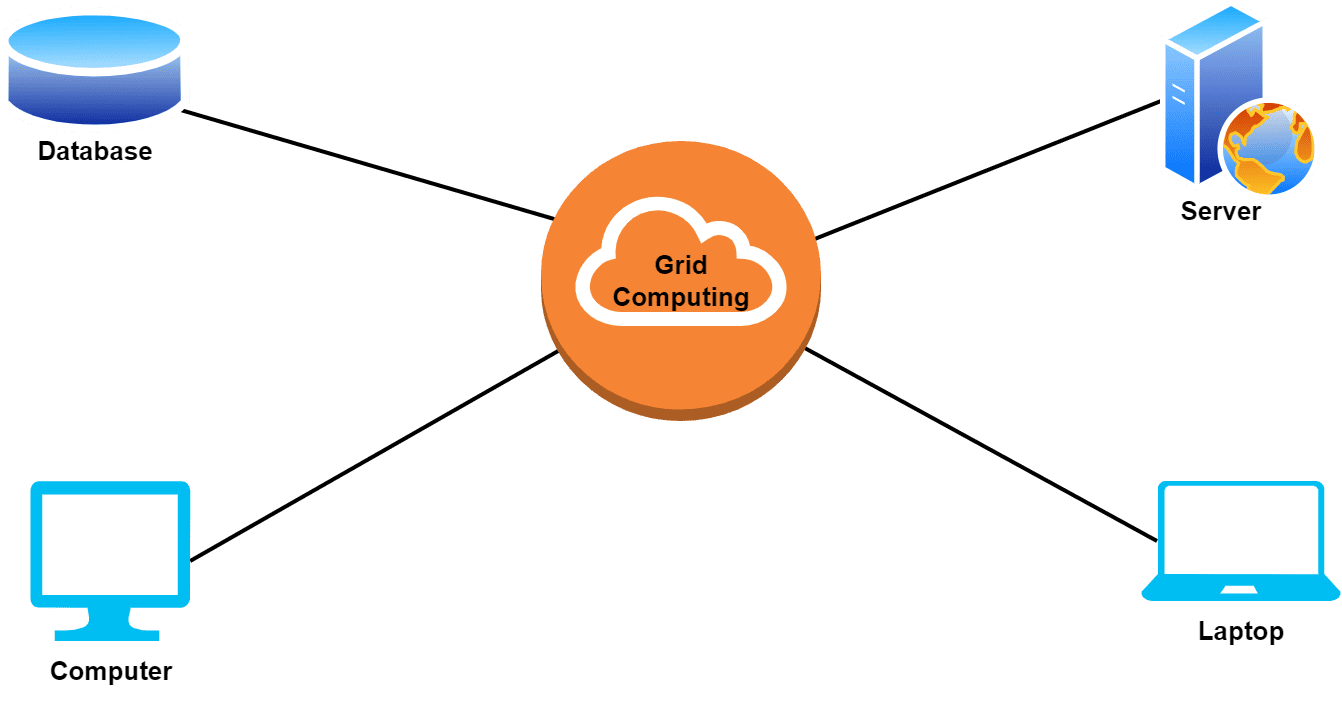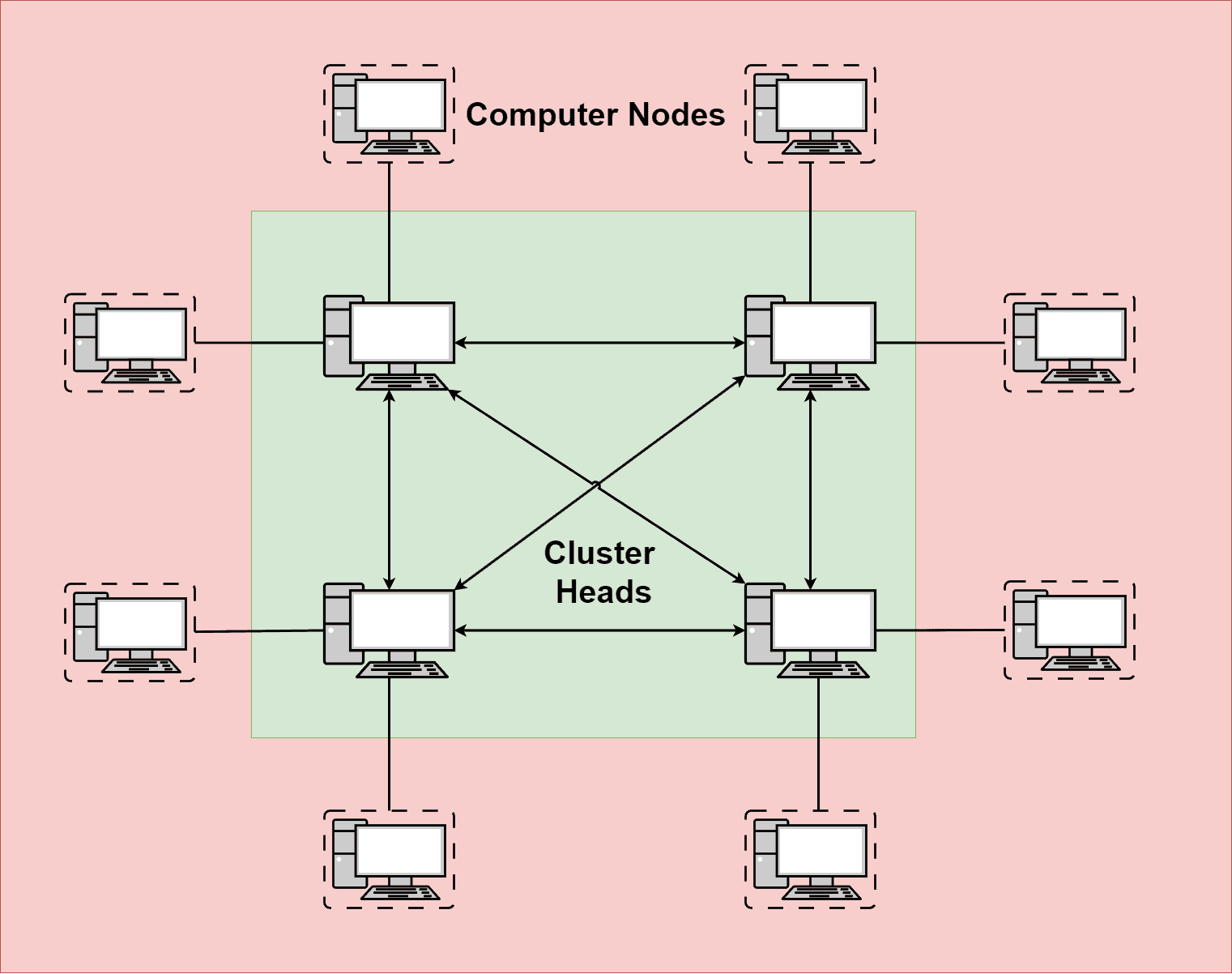1. 概述
在本篇文章中,我们将从计算机网络的角度出发,探讨 Cloud(云计算)、Grid(网格计算) 和 Cluster(集群计算) 的基本概念,并分析它们之间的核心差异。
这些技术在现代计算中各有其定位,适用于不同的应用场景。理解它们之间的差异,有助于我们在实际项目中做出更合适的技术选型。
2. Cloud(云计算)
云计算是一种由外部公司托管或管理的服务器网络,用户通过互联网访问这些资源。
与传统本地部署不同,云计算将计算资源(如服务器、存储、数据库等)集中托管在数据中心,并通过网络提供给用户使用。用户无需购买硬件或软件,只需按需使用并支付相应费用。
云计算的主要优势包括:
✅ 提高效率
✅ 降低运维成本
✅ 快速部署与弹性扩展
常见的云计算服务包括 IaaS(基础设施即服务)、PaaS(平台即服务)和 SaaS(软件即服务)。例如,AWS、Google Cloud 和 Azure 都是目前主流的云服务平台。
下图展示了典型的云计算架构:

如图所示,多个客户端可以通过互联网访问云端的资源、服务和应用。
3. Grid(网格计算)
网格计算是一种分布式计算架构,它将多个地理位置不同的计算机连接起来,形成一个强大的计算网络。
它的核心思想是:将多个独立的计算资源联合起来,共同解决一个复杂的任务。例如,科研项目中的大规模数据处理、天气模拟、基因分析等。
网格计算的特点包括:
✅ 多个节点协同工作
✅ 每个节点执行任务的一部分
✅ 节点之间可以独立运行,无统一控制中心
网格计算的架构如下图所示:

⚠️ 与云计算相比,网格计算更侧重于解决复杂计算任务,而云计算更偏向于提供可按需使用的 IT 资源。
4. Cluster(集群计算)
集群计算是由两个或多个计算机节点组成的网络拓扑结构,这些节点通过本地网络连接在一起,并作为一个整体对外提供服务。
集群通常部署在同一个物理位置,采用集中式架构。集群中的节点可以是同步或异步通信的,这取决于集群的类型。
集群与云计算和网格计算的关键区别在于:
- 集群节点通常运行相同的操作系统和硬件配置
- 集群对外表现为一个单一系统
- 集群中通常存在一个主控节点(Head Node)
典型的集群架构如下图所示:

✅ 集群适用于需要高可用性和高性能的场景,如 Web 服务器、数据库集群、搜索引擎等。
5. 核心差异对比
| 特性 | 云计算(Cloud) | 网格计算(Grid) | 集群计算(Cluster) |
|---|---|---|---|
| 资源管理方式 | 资源整合 | 资源分离 | 资源聚合 |
| 系统组成 | 多个系统组成一个逻辑整体 | 多个系统协同工作 | 多个节点互联 |
| 硬件/OS 支持 | 支持异构环境 | 支持异构环境 | 通常要求一致的 OS 和硬件 |
| 架构类型 | 集中式 | 分布式 | 集中式 |
| 故障容忍性 | 存在单点故障风险 | 无单点故障,节点独立运行 | 存在单点故障风险 |
| 控制权 | 用户对系统控制较弱 | 用户拥有完全控制权 | 无明确所有者,节点各自运行 |
| 任务调度 | 自主管理任务执行 | 可动态分配任务给可用节点 | 任务调度影响执行,需等待 |
| 典型应用 | Dropbox、Gmail | 模拟计算、自动化任务 | Web 服务器、搜索引擎 |
6. 总结
本文从计算机网络的角度出发,介绍了 Cloud(云计算)、Grid(网格计算) 和 Cluster(集群计算) 的基本概念与核心差异。
| 类型 | 核心用途 | 架构特点 | 适用场景 |
|---|---|---|---|
| Cloud | 提供远程 IT 资源 | 集中式,资源统一管理 | 企业级 SaaS、IaaS、PaaS |
| Grid | 解决复杂计算任务 | 分布式,资源协同 | 科研、大规模数据处理 |
| Cluster | 高可用高性能计算 | 集中式,节点协同 | Web 服务器、数据库集群 |
✅ 在实际开发中,选择合适的技术架构非常重要。例如:
- 如果你希望快速部署服务并按需付费,选择 云计算
- 如果你需要处理大规模复杂计算任务,选择 网格计算
- 如果你对性能和高可用性有较高要求,选择 集群计算
掌握这些差异,有助于我们在系统设计和运维中做出更合理的决策。